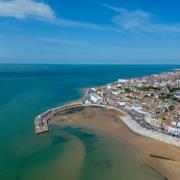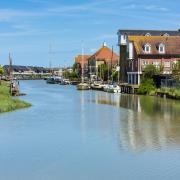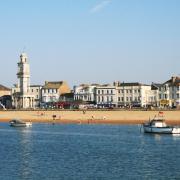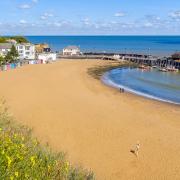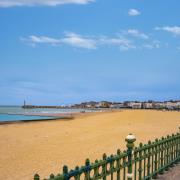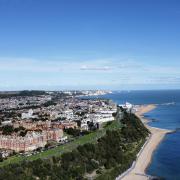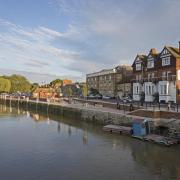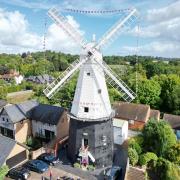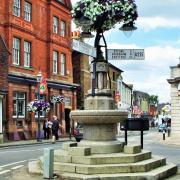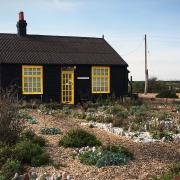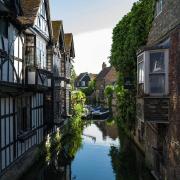Kent has more castles than any other county in England and being on the coast and England’s front line makes them of huge national and local significance

As English monarchs go, the best you can say about Henry VIII was that he was an overweight one whose lasting reputation is out of proportion to the real extent of his achievements.
Overestimating the might of his country, his posturing put the kingdom at risk of an invasion from the Europe’s Catholic powers in the late 1530s. But at least he didn’t sit back and do nothing about the possibility.
One of Henry’s lasting legacies on the military front was the revolutionary series of artillery forts he had built at vulnerable points along the English coast between 1539 and 1540.
Kent got three, at Deal, Walmer and Sandown, the latter a structure which suffered badly from coastal erosion and was largely demolished in the 19th century.
Deal Castle, now along with Walmer in the care of English Heritage, was the biggest and most elaborate of all these forts, though by the time it was finished in 1540, the threat from the continent had receded. But that doesn’t make its installation less historically important.
Deal’s symmetrical plan was intended to provide defence from all directions, in an important area of sheltered anchorage for shipping, not far from the hazardous, shifting sandbanks of the Goodwin Sands.
Not only that, but the four miles of shingle beach in the area offered a potentially easy spot for enemy forces to disembark, whereas further along they faced the impenetrable cliffs of the North Downs.

Deal’s innovative plan includes two rings of semi-circular bastions surrounding the central keep. The low-profiled, curving walls and platforms enabled them to respond to enemy fire from all directions. The rounded bastions and the keep were designed to deflect shot.
Although Deal witnessed no fighting during the Henry VIII’s time, it was called into action a century later when it was seriously bombard by the Parliamentarians during the English Civil War. It was also in use during the Napoleonic Wars, and was a Royal Artillery observation post in the Second World War.
Yet Deal also has a long history as a place of residence for its captain, and other military occupants and guests. Even while the castle was in the process of being built, Henry’s fourth wife to be Ann of Cleves would stay at Deal, on 27 December 1539, resting here for a few hours before continuing on to meet the king.
A new permanent exhibition unveiled by English Heritage, including mixed-media and interactive interpretation installations, gives visitors a wider picture of life in Deal Castle.
These include the imagined conversations of soldiers during the Civil War, which can be heard in the castle’s atmospheric, underground tunnel, known as The Rounds. It was through the tunnel’s 54-gun embrasures that soldiers equipped with handguns defended the moat.
In 1723, new apartments and the Captain’s House were built. Deal’s captain was appointed by the Lords Warden of the Cinque Ports, and used the castle as their residence.
Very often figures who had performed distinguished services in the Navy, the Captain’s Apartments have now been opened to the public for the first time. One of the most notable past holders of the office was General Sir John French, the First Earl of Ypres who commanded the British Expeditionary Force in the First World War. Also now open to the public is the chapel, built for French in 1923, its stained-glass window now restored and the chapel entirely refurbished. The military link has continued into the present today, with the chapel now used by the Burma Star Association in memory of service personnel of the Burma campaign during the Second World War.

With Sandown Castle now demolished, Walmer is Deal’s only surviving sister castle, and a cycle path links the two along the beachfront. While Deal, because of its size, was often referred to as the ‘Great Castle’, Walmer has immense appeal on account of its setting.
It is the official residence of the Lords Warden of the Cinque Ports, the most famously active holder of the office perhaps being the Duke of Wellington. He called Walmer the “most charming of marine residences” and became a familiar figure in the area. Walmer’s garden setting is particularly attractive. The much-travelled Wellington thought the lime trees in it were “the finest in the world.”
Blooming Gardens, 16-17 June, is Walmer’s big horticultural event, held when the gardens enter their most lush period. Walmer’s gardening team will lead tours, you can talk to garden traders, and there will be a children’s trail.
A performance of Alice in Wonderland on 28 July is being staged in the gardens by the Chapterhouse Theatre Company.
Summer Garden Music Concerts take place on 4, 11, 18 and 25 August.

Set in tranquil grounds adjoining a riverside village, this rare example of an Elizabethan artillery fort was begun in 1559 and redeveloped in 1599-1601 to protect warships at anchor in Chatham dockyard.
A task it singularly failed to perform when a Dutch fleet simply sailed on past in 1667 and set light to English warships moored in the docks.
On 9-10 June The Dutch Are Coming, a living history event staged by members of The Sealed Knot, relives the event.

The biggest and strongest of England’s medieval fortresses, the proud history of Dover Castle encompasses the Romans and the Normans, right up to Dunkirk.
Its position, commanding the shortest sea crossing between England and the continent, has given it immense strategic importance. The chalk of Castle Hill has been shaped and reshaped over the centuries into massive earthworks, ditches and mounds.
Imposing walls and towers have been raised and networks of tunnels built beneath them. King Henry II began the building of the present castle in the 1180s and over the next 800 years its buildings and defences were adapted to meet the changing demands of weapons and warfare.
On 19 May the Great Tower opens into the evening and after dark and you’ll get a rare opportunity to explore the castle interior and experience and the fantastic views from the rooftop after hours as colours paint the tower in a different light while the sun fades. It’s all part of the Museums at Night project.
A Tudor Pageant on 11-12 August recreates the time when Henry VIII prepared to invade France in 1544. And a Grand Medieval Joust re-enactment is being staged on 25-27 August.




